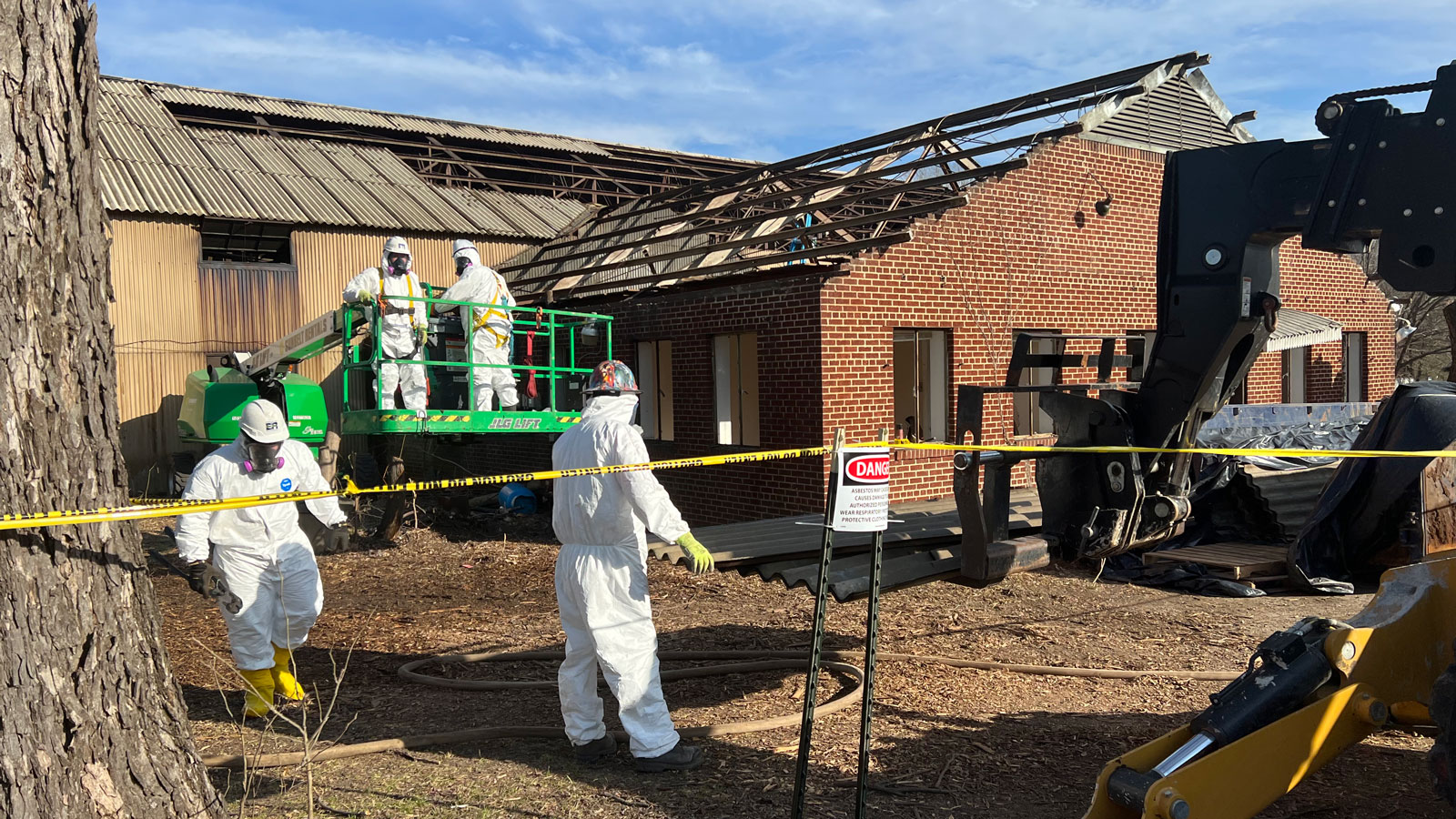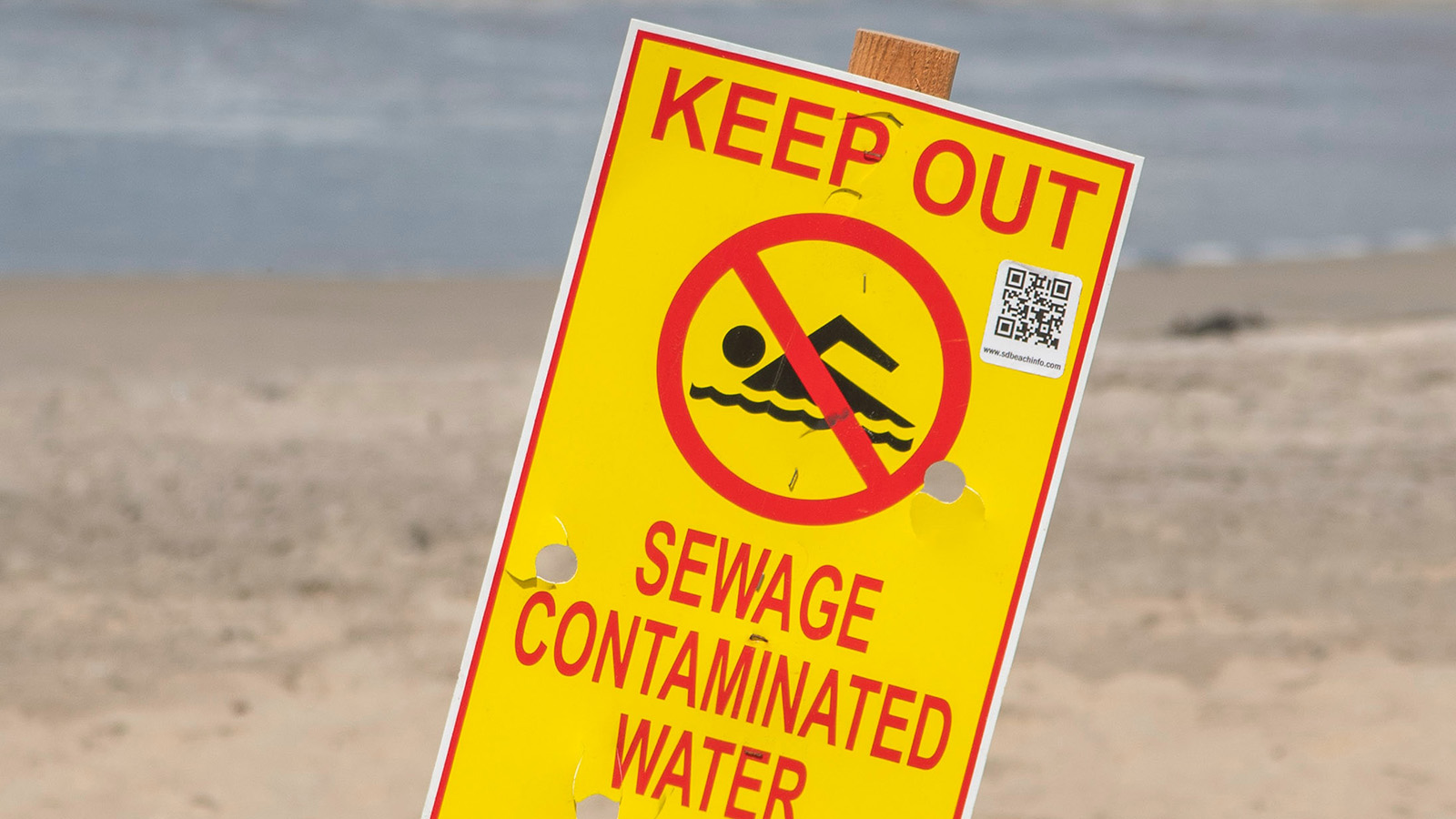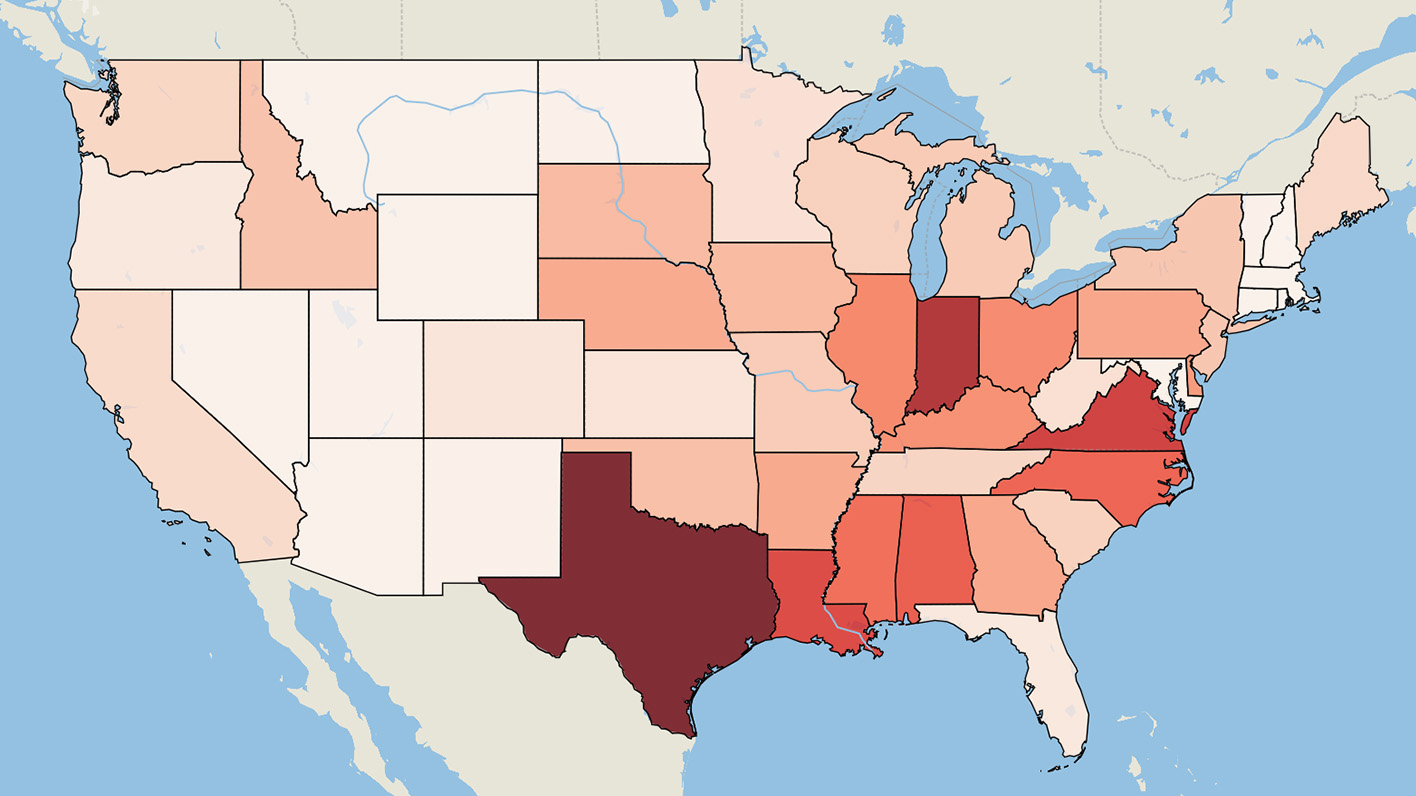
The Threat of “Forever Chemicals”
How PFAS put Marylanders’ health at risk, and what we can do about it
PFAS, or "forever chemicals," are used in non-stick pans, paper products, textiles, firefighting foam, electronics and other products. However, PFAS are dangerous for public health. Nearly indestructible in the environment, PFAS can cause kidney cancer, thyroid disruption, reduced responses to vaccination and other health problems. The Threat of "Forever Chemicals" documents the presence of these chemicals in Maryland and the risk they pose, and recommends steps for Maryland to protect public health and the environment.

Per- and polyfluoroalkyl substances, more commonly known as PFAS, are found in products from coatings for non-stick pans, paper products and textiles, to firefighting foam and electronics.1 Their oil- and water-repelling capabilities, their stability even at high temperatures, and their friction-reduction qualities have led to PFAS becoming a common ingredient in product manufacturing – and a ubiquitous presence in our homes and our communities.2
However, PFAS are dangerous for public health. Sometimes known by the moniker “forever chemicals” because they are nearly indestructible in the environment, PFAS build up in the bodies of humans over time and persist in the environment.3 Today, PFAS are so widespread that nearly every American has these chemicals in their blood.4 PFAS can cause kidney cancer, thyroid disruption, reduced responses to vaccination and other health problems.
Nonetheless, PFAS production continues, adding to the pollution that threatens our health and environment today and for decades to come.
To protect public health, Maryland must take strong action to stop the flow of PFAS into our environment and our bodies, clean up existing PFAS contamination, and hold manufacturers and polluters responsible for cleaning up the pollution and public health damage they have caused.
PFAS are harmful to public health. Even low levels of exposure to PFAS are linked to a range of health damages, including:
- Harm to the kidneys, leading to chronic kidney disease or kidney cancer,5
- Reduced antibody responses to vaccinations in both children and adults,6 and
- Increased risk of gestational diabetes, preeclampsia, low birth weight and childhood obesity.7
Despite industry claims to the contrary, newer types of PFAS are no safer for human health and the environment than older PFAS, such as PFOA and PFOS.8
- New PFAS travel more easily through water, resulting in widespread exposure, and thus may pose more risks to human and environmental health.9
- The U.S. Environmental Protection Agency has found that two newer PFAS chemicals create many of the same health impacts as older PFAS.10 EPA determined the toxicity of the PFAS known as GenX is in the same range as PFOA, the legacy PFAS it replaced.11
- Hundreds of public health experts around the globe have expressed concern about the health impacts of continuing to produce and use all varieties of PFAS.12
Many drinking water sources in Maryland are contaminated with PFAS. In late 2019, the Maryland Department of the Environment tested for contamination from legacy PFAS at water treatment plants that provide drinking water to 70% of Maryland’s population.13
- Approximately 75% of the samples had quantifiable levels of PFOA and PFOS.14
- The two highest readings were from Westminster and Hampstead, both in Carroll County.15
- Testing by the U.S. Department of Defense has found PFAS in drinking water at or near a dozen military facilities in Maryland.16
PFAS also contaminate groundwater and seafood in Maryland. PFAS contamination at military sites in Maryland often is traceable to the use of firefighting foam.17 PFAS from firefighting foam have leached into shallow groundwater, potentially flowing from there into nearby rivers and streams.
- PFAS contamination has been found in groundwater at eight military facilities in six counties in Maryland.18
- Testing found nine different types of PFAS in striped bass, crabs and oysters from the Potomac River and St. Inigoes Creek in southern Maryland.19 The Maryland Department of the Environment has detected PFAS in three species of fish from Piscataway Creek, a tributary of the Potomac River in Prince George’s County, and has warned people to limit their intake of particular species caught in the creek.20
To limit the spread of PFAS in the environment and reduce the risk of health impacts, policymakers should take a comprehensive approach to addressing the threat from PFAS.
The first step is to stop the problem from becoming worse.
- PFAS should be regulated as a class.21 Controlling the use of a single type of PFAS at a time has historically led to the regrettable substitution of replacement chemicals that are less well understood, not necessarily safer.
- Banning all PFAS will reduce exposure and harm. Eliminating the use of PFAS is crucial to protecting the environment and public health. The manufacturing and use of these chemicals have created widespread contamination that is extremely difficult to clean up and will create health risks for years.
Maryland policymakers should adopt measures to protect water quality, as several other states already have. PFAS spread readily through water, and this contamination is currently one of the most common ways that people are exposed to PFAS.
- Maryland policymakers should establish a limit strong enough to protect public health on the amount of PFAS that are permitted in drinking water. The federal government has no enforceable limit on the amount of PFAS that can be safely present in drinking water or the environment, but a number of states have established limits on PFAS in drinking water.
- The state should require and potentially help fund regular monitoring for PFAS in public drinking water and groundwater. Identifying PFAS contamination quickly can help jump-start remediation efforts, helping to prevent PFAS from spreading and reducing the long-term health effects associated with sustained contact with PFAS.
- The state should support efforts to decontaminate drinking water supplies so that they comply with any PFAS-in-drinking-water limit that is adopted by the state.
Existing PFAS contamination should be cleaned up before it spreads into more drinking water supplies, groundwater, or rivers and streams.
- Federal officials should mandate and fund cleanup of military facilities where water has been polluted with PFAS.
- The U.S. EPA should designate PFAS as hazardous substances, which would facilitate better management of the entire class of chemicals. It would also apply strict storage, transfer and disposal requirements to the chemicals under the federal Resource Conservation and Recovery Act. In addition, a designation under the federal Superfund law could make it easier for EPA to mandate cleanups.
- Regulators should ensure that PFAS removed from water or soil during remediation efforts do not create new pollution after disposal. The best solution would be to store PFAS and PFAS-containing materials until better technology is available to destroy them.
- State and federal leaders should hold the companies and U.S. government agencies that are responsible for PFAS contamination accountable for cleaning up their pollution.
Photo: Romiana Lee via Shutterstock
- Interstate Technology Regulator Council, History and Use of Per- and Polyfluoroalkyl Substances (PFAS) (fact sheet), April 2020, archived at http://web.archive.org/web/20210703083449/https://pfas-1.itrcweb.org/fact_sheets_page/PFAS_Fact_Sheet_History_and_Use_April2020.pdf.↩︎
- Rachel Ross, “What Are PFAS,” Live Science, 30 April 2019, archived at http://web.archive.org/web/20210524170612/https://www.livescience.com/65364-pfas.html; Properties: Rebecca Trager, Royal Society of Chemistry, A Persistent Perfluorinated Problem, 27 August 2019, archived at http://web.archive.org/web/20210618012531/https://www.chemistryworld.com/features/a-persistent-perfluorinated-problem/3010817.article.↩︎
- Environmental Working Group (EWG), What Are PFAS Chemicals, accessed on 7 September 2021, archived at http://web.archive.org/web/20210813195954/https://www.ewg.org/pfaschemicals/what-are-forever-chemicals.html.↩︎
- Centers for Disease Control and Prevention, National Biomonitoring Program, Per- and Polyflourinated Substances (PFAS) Factsheet, 16 August 2021, archived at http://web.archive.org/web/20210829185110/https://www.cdc.gov/biomonitoring/PFAS_FactSheet.html.↩︎
- Kidney disease: Anoop Shankar, Jie Xiao, and Alan Ducatman, “Perfluoroalkyl chemicals and chronic kidney disease in US adults,” American Journal of Epidemiology, 174(8), DOI: 10.1093/aje/kwr171, 26 August 2011, archived at http://web.archive.org/web/20210311183344/https://www.ncbi.nlm.nih.gov/pmc/articles/PMC3218627/; Kidney cancer: DCEG Staff, National Cancer Institute, Environmental Pollutant, PFOA, Associated with Increased Risk of Kidney Cancer, 20 September 2020, archived at http://web.archive.org/web/20210725190158/https://dceg.cancer.gov/news-events/news/2020/pfoa-kidney.↩︎
- Philippe Grandjean et al., “Estimated exposures to perfluorinated compounds in infancy predict attenuated vaccine antibody concentrations at age 5-years,” Journal of Immunotoxicology, 14(1), DOI: 10.1080/1547691X.2017.1360968, 2017, archived at http://web.archive.org/web/20210606181809/https://www.ncbi.nlm.nih.gov/pmc/articles/PMC6190594/; Claire Looker et al., “Influenza vaccine response in adults exposed to perfluorooctanoate and perfluorooctanesulfonate,” Toxicological Sciences, 128(1), DOI: 10.1093/toxsci/kft269, March 2014, archived at http://web.archive.org/web/20210220220028/https://www.ncbi.nlm.nih.gov/pmc/articles/PMC4724206/.↩︎
- John T Szilagyi, Vennela Avula and Rebecca C Fry, “Perfluoroalkyl substances (PFAS) and their effects on the placenta, pregnancy, and child development: a potential mechanistic role for placental peroxisome proliferator-activated receptors (PPARs),” Current Environmental Health Reports, 7(3), DOI: 10.1007/s40572-020-00279-0, September 2020, archived at http://web.archive.org/web/20210318001819/https://pubmed.ncbi.nlm.nih.gov/32812200/.↩︎
- Anna Reade, Natural Resources Defense Council, The Scientific Basis for Mangaging PFAS as a Chemical Class (blog), 30 June 2020, archived at https://web.archive.org/web/20210514051247/https://www.nrdc.org/experts/anna-reade/scientific-basis-managing-pfas-chemical-class.↩︎
- Fan Li et al., “Short-chain per- and polyfluoralkyl substances in aquatic systems: occurrence, impacts and treatment,” Chemical Engineering Journal, 15 January 2020, https://doi.org/10.1016/j.cej.2019.122506, available at https://www.sciencedirect.com/science/article/abs/pii/S1385894719319096.↩︎
- Anna Reade, Natural Resources Defense Council, EPA Finds Replacements for Toxic “Teflon” Chemicals Toxic, 15 November 2018, archived at https://web.archive.org/web/20211002204550/https://www.nrdc.org/experts/anna-reade/epa-finds-replacements-toxic-teflon-chemicals-are-also.↩︎
- Ibid.; U.S. Environmental Protection Agency, Fact Sheet: Human Health Toxicity Assessment for GenX Chemicals, October 2021, archived at https://web.archive.org/web/20211025194029/https://www.epa.gov/system/files/documents/2021-10/genx-final-tox-assessment-general_factsheet-2021.pdf.↩︎
- Arlene Blum et al., “The Madrid statement on poly- and perfluoroalkyl substances, (PFASs),” Environmental Health Perspectives, 123(5), 1 May 2015, DOI: https://doi.org/10.1289/ehp.1509934.↩︎
- Maryland Department of the Environment, Understanding the Occurrence of Per- and Polyfluoroalkyl Substances (PFAS) in Maryland’s Public Drinking Water Sources, accessed 7 September 2021, archived at http://web.archive.org/web/20210720143939/https://mde.maryland.gov/programs/Water/water_supply/Documents/PFAS_Public_Water_System_Study-Phase1Report.pdf.↩︎
- Ibid., p. 4.↩︎
- Ibid., p. 4.↩︎
- Environmental Work Group, PFAS Contamination Map, 6 January 2021, available at https://www.ewg.org/interactive-maps/pfas_contamination/map/.↩︎
- Naval Air Station Patuxent River Restoration Advisory Board, PFAS Update: Naval Air Station Patuxent River and Webster Outlying Field, 28 April 2021, available at https://www.navfac.navy.mil/content/dam/navfac/Environmental/PDFs/env_restoration/nas_patuxent_river/NAS_Patuxent_River_RAB_Presentation_202104.pdf, p. 9.↩︎
- Maryland Department of the Environment, Public Health: Maryland and PFAS, accessed 7 September 2021, archived at http://web.archive.org/web/20210815110952/https://mde.maryland.gov/PublicHealth/Pages/PFAS-Landing-Page.aspx.↩︎
- Public Employees for Environmental Responsibility, More PFAS Found in Maryland Water and Seafood, 16 November 2020, archived at http://web.archive.org/web/20210812170801/https://www.peer.org/more-pfas-found-in-maryland-water-and-seafood/.↩︎
- Maryland Department of the Environment, Department of the Environment Issues First Fish Consumption Advisory for PFAS (press release), 15 October 2021, archived at https://web.archive.org/web/20211018005323/https://news.maryland.gov/mde/2021/10/15/department-of-the-environment-issues-first-fish-consumption-advisory-for-pfas/; Christine Condon, “Maryland issues first fish consumption advisory because of PFAS,” Baltimore Sun, 17 October 2021, archived at https://web.archive.org/web/20211017170318/https://www.baltimoresun.com/news/environment/bs-md-pfas-fish-consumption-advisory-piscataway-creek-potomac-river-20211017-2lvrssyyfrggxjledgo3bl53me-story.html.↩︎
- Carol F. Kwiatkowski et al., “Scientific basis for managing PFAS as a chemical class,” Environmental Science and Technology Letters, 7(8), DOI: https://doi.org/10.1021/acs.estlett.0c00255, 30 June 2020, archived at http://web.archive.org/web/20210904152440/https://pubs.acs.org/doi/10.10….↩︎
Topics
Authors
Elizabeth Ridlington
Associate Director and Senior Policy Analyst, Frontier Group
Elizabeth Ridlington is associate director and senior policy analyst with Frontier Group. She focuses primarily on global warming, toxics, health care and clean vehicles, and has written dozens of reports on these and other subjects. Elizabeth graduated with honors from Harvard with a degree in government. She joined Frontier Group in 2002. She lives in Northern California with her son.
Emily Scarr
State Director, Maryland PIRG Foundation
Emily directs strategy, organizational development, research, communications and legislative advocacy for Maryland PIRG. Recently, Emily helped win small donor public financing in Montgomery and Howard counties, and the Maryland Keep Antibiotics Effective Act to protect public health by restricting the use of antibiotics on Maryland farms. Emily also serves on the Executive Committees of the Maryland Fair Elections Coalition and the Maryland Campaign to Keep Antibiotics Working, and the Steering Committees for the Maryland Pesticide Action Network and Marylanders for Open Government. Emily lives in Baltimore with her husband and dog.
Find Out More

Superfund Back on Track

Safe for Swimming?

The Threat of “Forever Chemicals”


